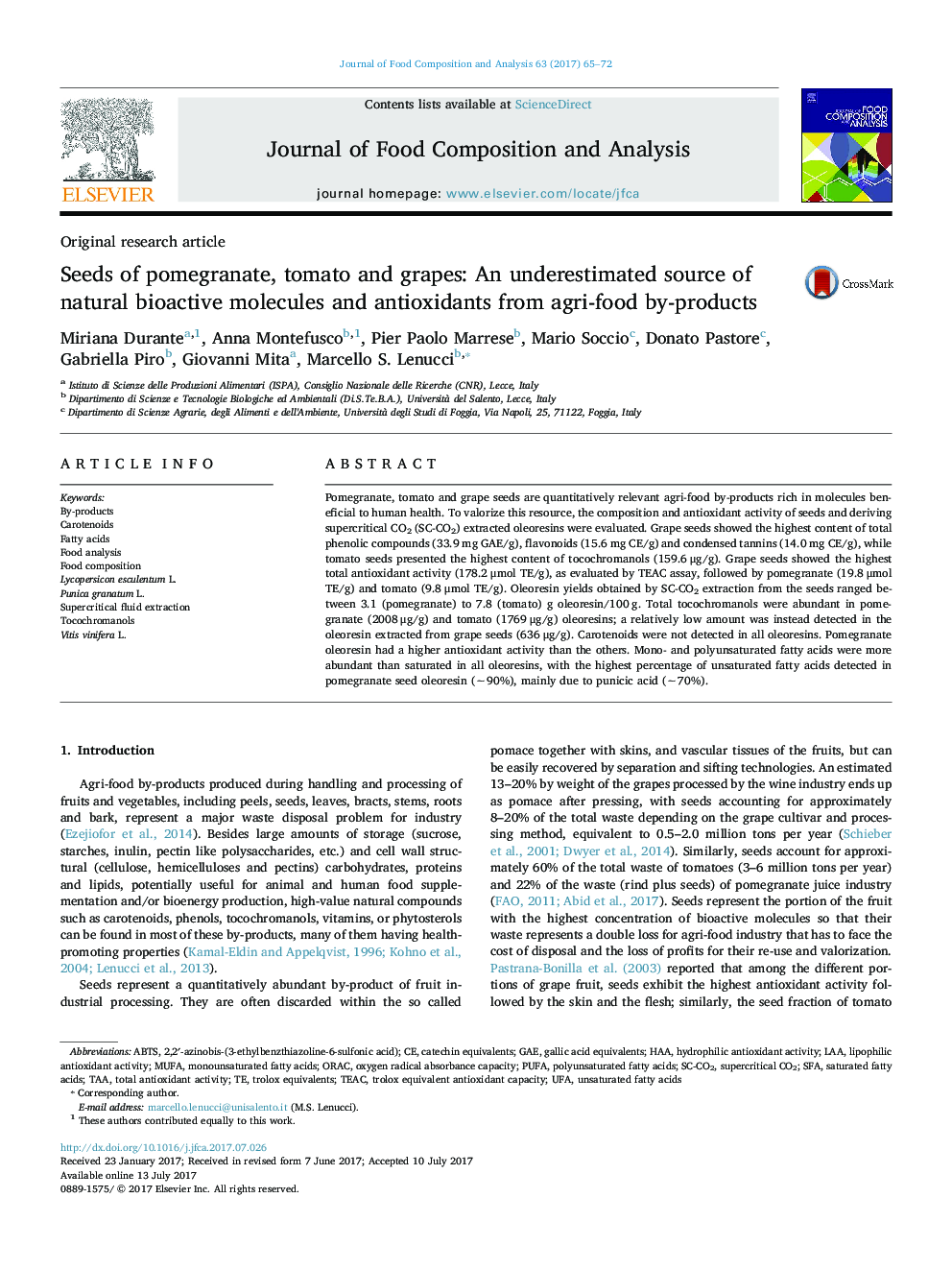| Article ID | Journal | Published Year | Pages | File Type |
|---|---|---|---|---|
| 5136817 | Journal of Food Composition and Analysis | 2017 | 8 Pages |
â¢Pomegranate, tomato and grape seeds were biochemically characterized.â¢Seeds were extracted by supercritical CO2 to prepare high-value vegetable oils.â¢Oils were assayed for isoprenoids, fatty acids and antioxidant activity.â¢Seeds are useful sources of phenolics, tocochromanols and unsaturated fatty acids.â¢Carefully designed oil blends can meet specific dietary requirements of customers.
Pomegranate, tomato and grape seeds are quantitatively relevant agri-food by-products rich in molecules beneficial to human health. To valorize this resource, the composition and antioxidant activity of seeds and deriving supercritical CO2 (SC-CO2) extracted oleoresins were evaluated. Grape seeds showed the highest content of total phenolic compounds (33.9 mg GAE/g), flavonoids (15.6 mg CE/g) and condensed tannins (14.0 mg CE/g), while tomato seeds presented the highest content of tocochromanols (159.6 μg/g). Grape seeds showed the highest total antioxidant activity (178.2 μmol TE/g), as evaluated by TEAC assay, followed by pomegranate (19.8 μmol TE/g) and tomato (9.8 μmol TE/g). Oleoresin yields obtained by SC-CO2 extraction from the seeds ranged between 3.1 (pomegranate) to 7.8 (tomato) g oleoresin/100 g. Total tocochromanols were abundant in pomegranate (2008 μg/g) and tomato (1769 μg/g) oleoresins; a relatively low amount was instead detected in the oleoresin extracted from grape seeds (636 μg/g). Carotenoids were not detected in all oleoresins. Pomegranate oleoresin had a higher antioxidant activity than the others. Mono- and polyunsaturated fatty acids were more abundant than saturated in all oleoresins, with the highest percentage of unsaturated fatty acids detected in pomegranate seed oleoresin (â¼90%), mainly due to punicic acid (â¼70%).
